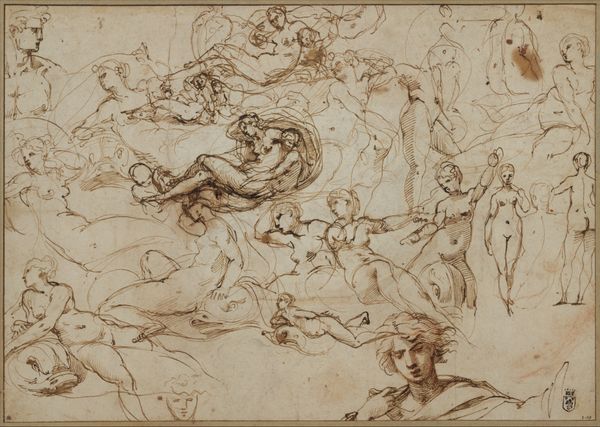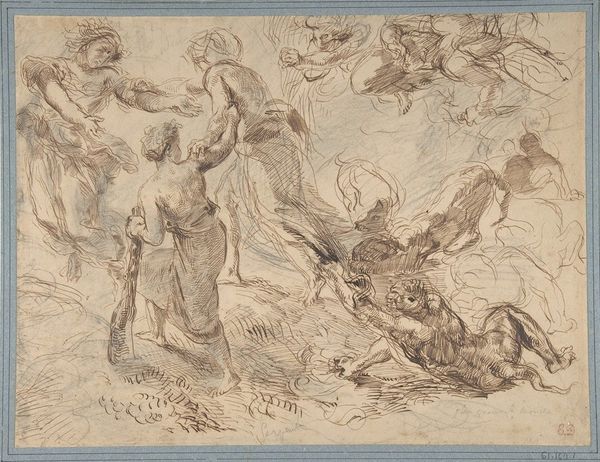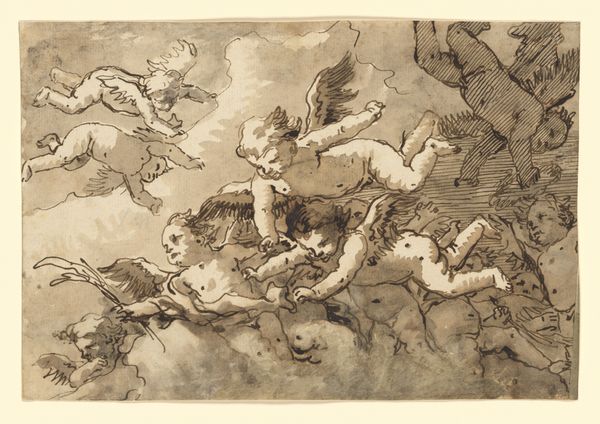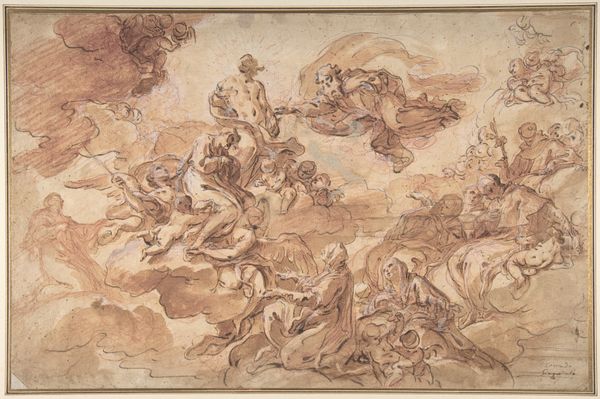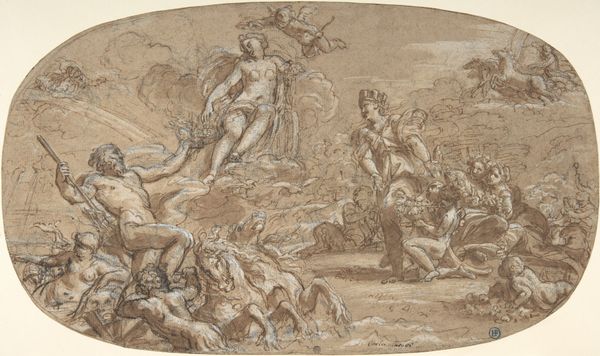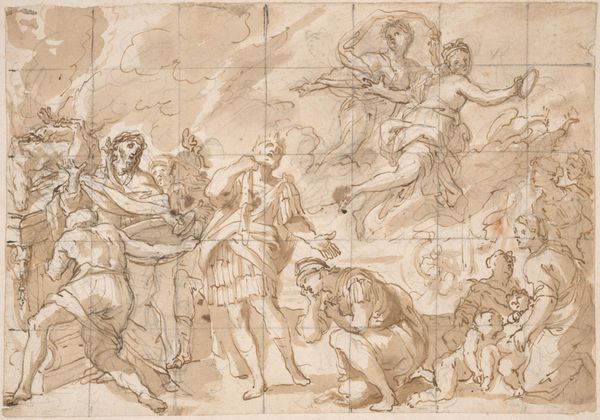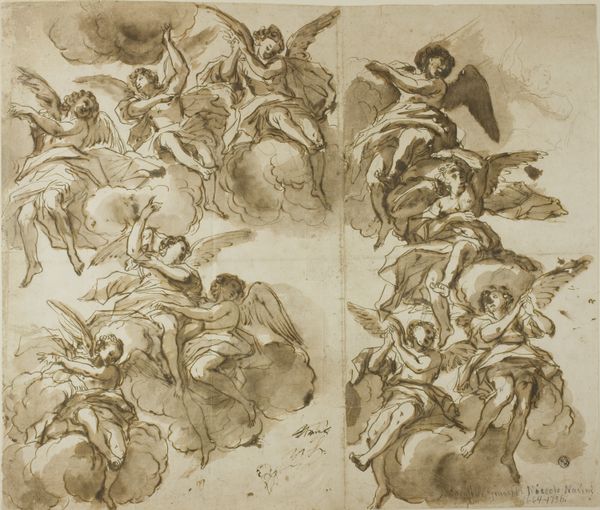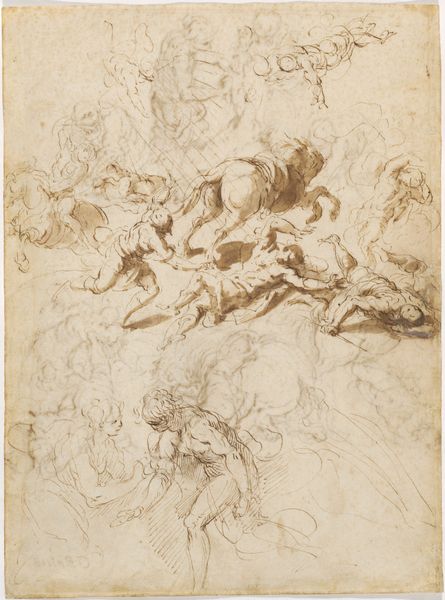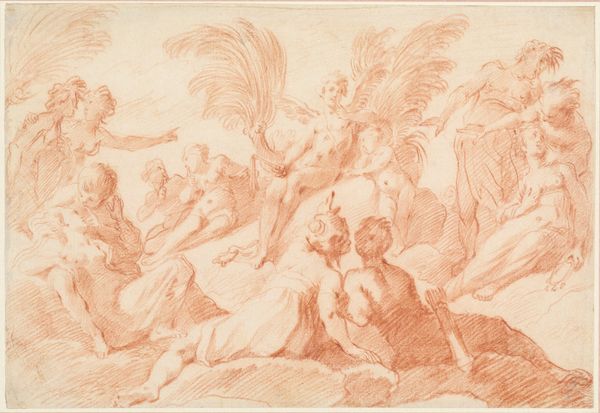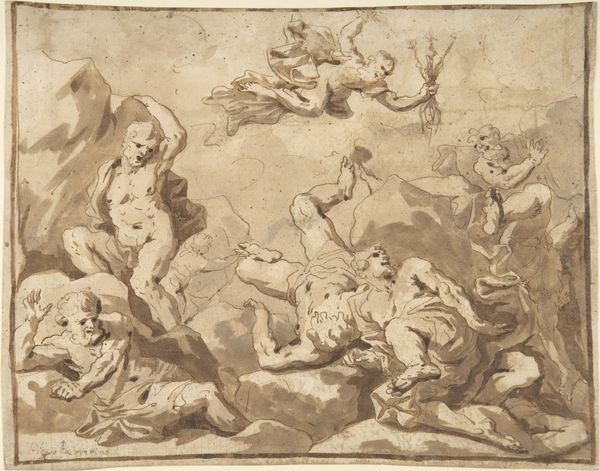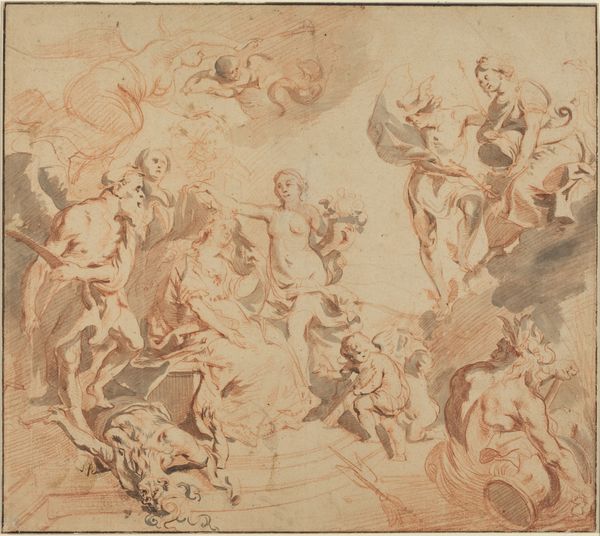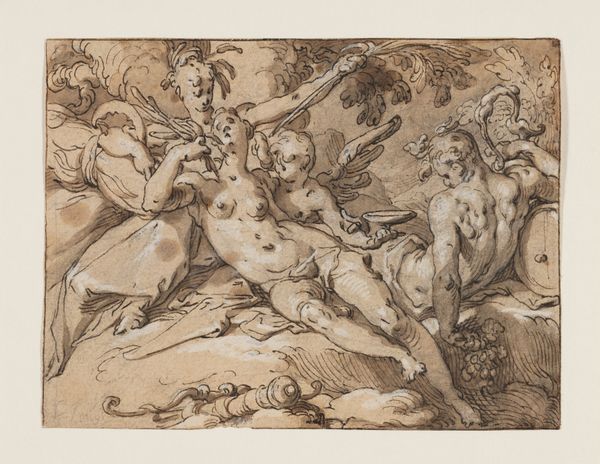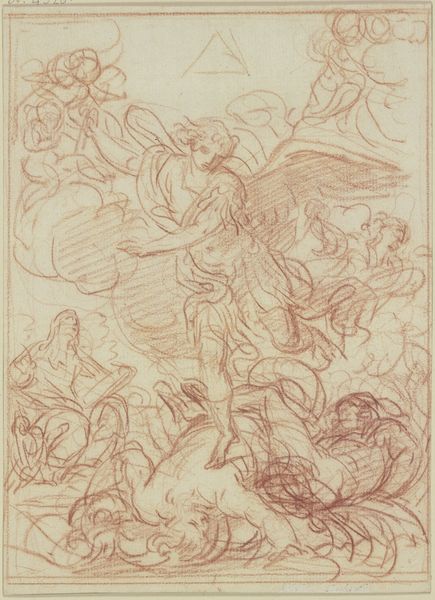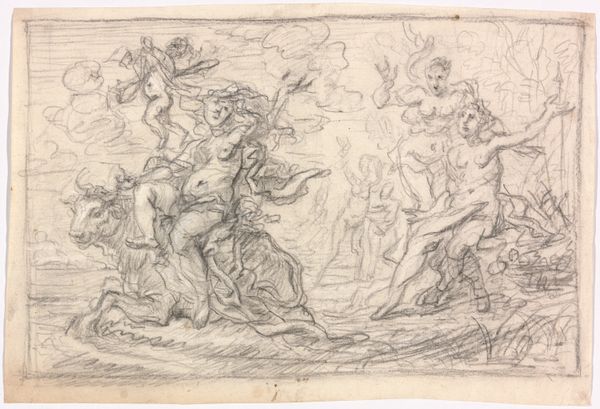
Apotheosis of Hercules (recto); Sketches of Horse's Head, Horse's Forequarters, and Altarpiece or Ciborium (verso) n.d.
0:00
0:00
drawing, print, gouache, paper, ink, pen
#
drawing
#
allegory
# print
#
gouache
#
mannerism
#
figuration
#
paper
#
ink
#
pen
#
history-painting
#
academic-art
Dimensions: 256 × 369 mm
Copyright: Public Domain
Curator: Here we have a drawing by Anton Domenico Gabbiani, aptly named "Apotheosis of Hercules." Editor: My immediate sense is one of lightness, or rather a study in air itself. All these figures drifting about, suspended in some sort of divine atmosphere. The monochrome ink helps evoke a dreamlike, almost sepia-toned quality. Curator: The artist worked with pen, ink, and gouache on paper to conjure this dynamic composition. The main focus is of course Hercules. Look how Gabbiani uses layering, placing his idealized nude figure at the center. This elevates the hero literally and symbolically, right? Editor: Yes, although knowing it’s gouache adds something. It wasn't just a quick sketch but clearly quite involved and crafted with intent, thinking through not just Hercules, but what labor must go into any idealization. One can almost feel the paper under the artist’s hand. Curator: Exactly, there’s something quite interesting in the dual nature here; on one side "Apotheosis," with a bold declaration and a full display, and on the verso, subtle, almost hidden, sketches depicting horses and what appears to be church decorations. The artist shows a complete embrace of different spheres. Editor: Absolutely! It really asks questions around this period. Is this a classical subject reinforcing established authority, or is it also the artist hinting at emerging changes? Ink was cheap. Paper plentiful. The way that labor is represented tells of broader trends in devotional or allegorical subjects...It almost renders the heroism itself as...product. Curator: What an intriguing thought! Looking closer at his gestures, the soft rendering of his flesh and idealized proportions… well, it speaks to this artist’s understanding of both academic artistic canons, and an aspiration toward something even greater than skill. It almost feels as if his hand, wielding that very pen and ink, attempts a form of...transcendence? Editor: Right. These materials weren't precious in themselves; they were just transformed. It is something to ponder what has stayed the same, and what has transformed since it was made in regards to the understanding and even the price of production, no?
Comments
No comments
Be the first to comment and join the conversation on the ultimate creative platform.
